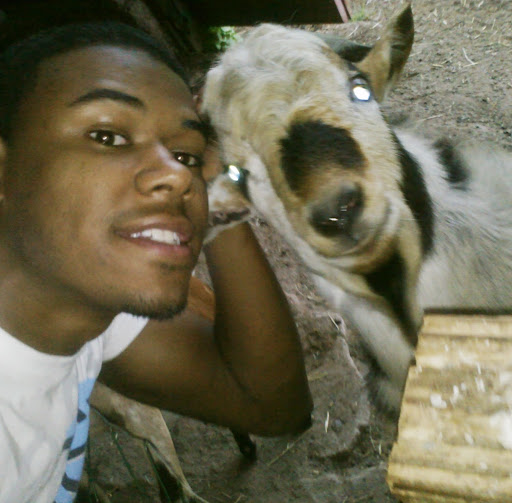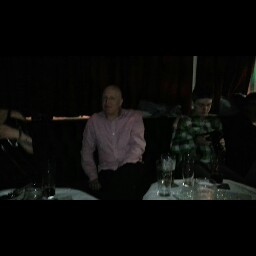Carl William Bolton
age ~74
from Solvang, CA
- Also known as:
-
- Carl W Bolton
- William W Bolton
- Bill Bolton
Carl Bolton Phones & Addresses
- Solvang, CA
- 1861 Sunnyhill Rd, Los Osos, CA 93402 • 805 528-7247
- San Luis Obispo, CA
- 2110 De La Vina St, Santa Barbara, CA 93105 • 805 898-2010
- Carlsbad, CA
- Flagstaff, AZ
- Calabasas, CA
- 2136 Holly Ln, Solvang, CA 93463
Work
-
Position:Transportation and Material Moving Occupations
Education
-
Degree:High school graduate or higher
Us Patents
-
Concealed Fastener, System, And Associated Methods
view source -
US Patent:7044460, May 16, 2006
-
Filed:Apr 15, 2003
-
Appl. No.:10/414057
-
Inventors:Carl William Bolton - Santa Barbara CA, US
-
International Classification:B25B 1/20
-
US Classification:269 37
-
Abstract:A device for affixing a decking member to a joist includes a jig body positionable atop a pair of spaced-apart decking members positioned atop a joist. The jig body has an angled bore having a bottom end extending through a bottom face of the jig body, the bottom end of the angled bore in communication with the space between the decking members. The angled bore defines a centerline extending through the space to a position on the side of the first structural member. The angled bore is for receiving a fastener drivable therethrough into the first structural member's side face, through the first structural member's bottom face, and into the second structural member's top face.
-
Barrel Stave Lamp
view source -
US Patent:D663473, Jul 10, 2012
-
Filed:Sep 27, 2011
-
Appl. No.:29/374729
-
Inventors:Carl William Bolton - Santa Barbara CA, US
-
International Classification:2699
-
US Classification:D26118
-
Concealed Fastener, System, And Associated Methods
view source -
US Patent:20090001642, Jan 1, 2009
-
Filed:May 16, 2006
-
Appl. No.:11/383558
-
Inventors:Carl William Bolton - Santa Barbara CA, US
-
International Classification:B25B 5/14
F16B 35/02 -
US Classification:269 37, 411383
-
Abstract:A device for affixing a decking member to a joist includes a jig body positionable atop a pair of spaced-apart decking members positioned atop a joist. The jig body has an angled bore having a bottom end extending through a bottom face of the jig body, the bottom end of the angled bore in communication with the space between the decking members. The angled bore defines a centerline extending through the space to a position on the side of the first structural member. The angled bore is for receiving a fastener drivable therethrough into the first structural member's side face, through the first structural member's bottom face, and into the second structural member's top face.
-
Intratunnel Attachment Device And System For A Flexible Load-Bearing Structure And Method Of Use
view source -
US Patent:59066326, May 25, 1999
-
Filed:Oct 3, 1997
-
Appl. No.:8/943457
-
Inventors:Carl William Bolton - Santa Barbara CA
-
Assignee:Innovasive Devices, Inc. - Marlborough MA
-
International Classification:A61B 1704
-
US Classification:606232
-
Abstract:A device for urging a flexible member against an inner surface of a bone tunnel includes a deformable ring that has a bore extending from a first side to a second side and a proximal cutout at a proximal end that extends from an outer surface into the bore. The ring is dimensioned to slide within a bone tunnel and is adapted to permit a positioning of a pair of end segments of a flexible member between two opposed generally flat sections of the ring and an inner wall of the bone tunnel. In position the flat sections are generally parallel to a tunnel longitudinal axis. The ring is expandable from a collapsed state wherein the first and the second sections are a first distance apart to an expanded state wherein the first and the second sections are a second distance apart greater than the first distance. The device further includes a screw that is insertable through the proximal cutout into the ring bore for expanding the flat sections outward. Such an expansion is for urging the ring's outer surface against the flexible member end segments to retain the flexible member end segments against the bone tunnel's inner wall.
-
Prosthesis For Tensile-Load-Carrying Tissue And Method Of Manufacture
view source -
US Patent:50491555, Sep 17, 1991
-
Filed:Aug 16, 1990
-
Appl. No.:7/568625
-
Inventors:William C. Bruchman - Flagstaff AZ
Carl W. Bolton - Flagstaff AZ
James R. Bain - Flagstaff AZ -
Assignee:W. L. Gore & Associates, Inc. - Neward DE
-
International Classification:A61F 268
-
US Classification:623 17
-
Abstract:The inventive article is a ligament or tendon prosthesis having multiple longitudinally parallel strands of microporous expanded polytetrafluoroethylene, the individual strands having an average porosity greater than 30% in the areas requiring tissue ingrowth. Additionally, strand dimensions and microstructure are selected so that tissue can penetrate throughout. The prosthesis is formed from multiple loops of a single continuous filament. Densified eyelets are formed in the loop for mounting to bone. The strands are twisted 180. degree. or arranged in a loose braid about the prothesis axis for improved load distribution during bending of the prosthesis.
-
Dental Implant With Expanded Ptfe Gingival Interface
view source -
US Patent:45319162, Jul 30, 1985
-
Filed:Jul 8, 1983
-
Appl. No.:6/511995
-
Inventors:Todd V. Scantlebury - Flagstaff AZ
Jeanne B. Ambruster - Flagstaff AZ
Carl W. Bolton - Flagstaff AZ
Stephen E. Campbell - Cave Creek AZ
La Thaggar Green - Flagstaff AZ -
Assignee:W. L. Gore & Associates, Inc. - Newark DE
-
International Classification:A61C 800
-
US Classification:433173
-
Abstract:A dental implant device. A dental implant device having: (a) a root structure made of a biocompatible, mechanically suitable prosthetic material; (b) a cervical segment projecting above the root structure, made of a biocompatible, nonporous material and having smooth surfaces and together with the root structure forming a member; and (c) a gingival interface made of expanded polytetrafluoroethylene having a porous structure for the ingrowth of connective tissue, located adjacent to the juncture of the root structure and the cervical segment attached to the member and forming a border around the apical end of the cervical segment. The expanded polytetrafluoroethylene provides for an interlocking between the gingival tissue and the pergingival portion of the dental implant preventing bacterial penetration and infection where the implant extends into the oral cavity.
-
Drill Guide Device For The Arthroscopic Anatomic Placement Of A Straight Tibio-Femoral Bone Tunnel For Acl Reconstruction
view source -
US Patent:55141447, May 7, 1996
-
Filed:Dec 20, 1993
-
Appl. No.:8/173675
-
Inventors:Carl W. Bolton - Santa Barbara CA
-
International Classification:A61B 1756
-
US Classification:606 96
-
Abstract:The invention provides a drill guide device to accurately place a straight bone tunnel through the tibia and into the femur, the axis of which passes through the anatomic points of origin and insertion of the anterior cruciate ligament. A unique feature of the invention is that by virtue of the linkage mechanism for variable length adjustment, it can simultaneously select on two reference points within a joint thereby allowing for the sequential drilling of the bone tunnels in a straight line incorporating both of the reference points. The method of use for this drill guide device is intended to be positioned through an arthroscopic portal and does not require a femoral incision.
-
Prosthesis For Tensile Load-Carrying Tissue And Method Of Manufacture
view source -
US Patent:52580407, Nov 2, 1993
-
Filed:Feb 28, 1991
-
Appl. No.:7/662184
-
Inventors:William C. Bruchman - Flagstaff AZ
Carl W. Bolton - Flagstaff AZ
James R. Bain - Flagstaff AZ -
Assignee:W. L. Gore & Associates - Newark DE
-
International Classification:A61F 200
B60R 2220 -
US Classification:623 66
-
Abstract:The inventive article is a ligament or tendon prosthesis having multiple longitudinally parallel strands of microporous expanded polytetrafluoroethylene, the individual strands having an average porosity greater than 30% in the areas requiring tissue ingrowth. Additionally, strand dimensions and microstructure are selected so that tissue can penetrate throughout. The prosthesis is formed from multiple loops of a single continuous filament. Densified eyelets are formed in the loop for mounting to bone. The strands are twisted 180. degree. or arranged in a loose braid about the prosthesis axis for improved load distribution during bending of the prosthesis.
License Records
Doctor Of Veterinary Medicine
Address:
219A W De Ln Guerra, Santa Barbara, CA 93101
License #:
2791 - Expired
Issued Date:
Jun 30, 1975
Renew Date:
Oct 31, 1988
Expiration Date:
Oct 31, 1988
Type:
Veterinarian
Resumes

Carl Bolton
view source
Carl Bolton
view sourceFlickr
Googleplus

Carl Bolton

Carl Bolton

Carl Bolton
Youtube
Myspace
Classmates

Carl Bolton
view sourceSchools:
Knotty Oak Elementary School Coventry RI 1971-1977
Community:
Dawn Moniz, Rhonda Kostka, Sean Finnerty

Carl Bolton
view sourceSchools:
Hempstead Elementary School St. Louis MO 1963-1964, Dozier Elementary School St. Louis MO 1964-1965
Community:
Michael Staley, Terrance Collins, Chris Balsano, Tammy Cooley, Gary Trolinger, Debra Cherry, Cynthia Jenkins, E Bartz, Debra Curry

Carl Bolton, Paris High S...
view source
Dozier Elementary School,...
view sourceGraduates:
Carl Bolton (1964-1965),
Janice Brooks (1952-1956),
David Thomas (1951-1955),
Willie McCuller (1966-1970)
Janice Brooks (1952-1956),
David Thomas (1951-1955),
Willie McCuller (1966-1970)

Hempstead Elementary Scho...
view sourceGraduates:
Danielle Cleveland (1979-1983),
Edith Yesselman (1936-1940),
Edith Yesselman (1936-1940),
Carl Bolton (1963-1964),
Jeffery Chandler (1968-1972)
Edith Yesselman (1936-1940),
Edith Yesselman (1936-1940),
Carl Bolton (1963-1964),
Jeffery Chandler (1968-1972)

Paris High School, Paris,...
view sourceGraduates:
Bennett Bennett (1967-1971),
Carl Bolton (1986-1990),
Kelly Ridens (2001-2005),
Luann Rosson (1974-1978)
Carl Bolton (1986-1990),
Kelly Ridens (2001-2005),
Luann Rosson (1974-1978)

Carl Bolton
view source
Carl Bolton
view source
Carl Bolton
view source
Carl Bolton
view source
Carl Bolton
view source
Carl Bolton
view source
Carl Bolton
view source
Carl Bolton
view sourceGet Report for Carl William Bolton from Solvang, CA, age ~74















